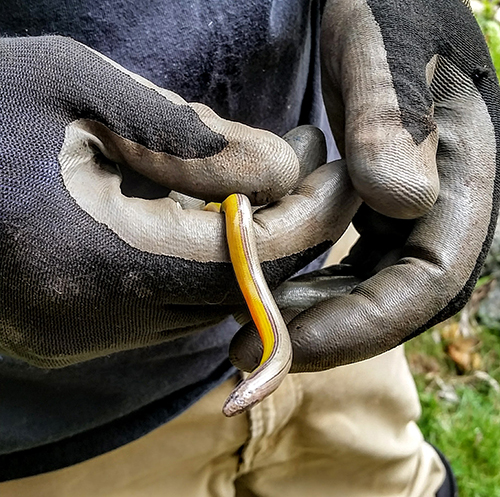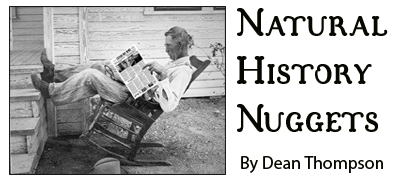By Dean Thompson

My son always hated taking out the compost bucket. I must admit by the time the bucket full of banana peels, peach pits, melon rinds, moldy pieces of bread and other food waste was ready to be dumped into the compost pile it could be rather odoriferous. Once dumped, the mass of sometimes smelly, slimy, and moldy food waste had to be broken up, spread around, then covered with dry leaves and watered. This was just a little too much for him.
As a biologist though, I found it to be fascinating. Sure, the rotting mass of food was not pleasant to smell or look at, but here I was creating a miniature habitat where a whole host of organisms were turning this dead plant matter into something that would foster life. Early on biologists learn that we can’t have life without death. The mere fact of our existence is because thousands of living things have died so that we can be here. I hate to be trite, but it is indeed the circle of life, of which my compost pile is just a microcosm.
Beetles, springtails, red wiggler worms, ants and other invertebrates combine with bacteria and fungus to break it all down to compost/soil for my garden. But in addition to those critters, I occasionally find other larger critters attracted to the fecund pile of decomposing vegetation. My dog is especially keyed into the compost pile when I turn it, hoping to grab the occasional mouse that was enjoying the banquet of leftovers. Myself, I am always on the lookout for one of my favorite reptiles, the California legless lizard.
Yes, legless lizard. The presence or absence of legs is not the determining factor as to what group the animal belongs to. Snakes and lizards are both vertebrates with scales covering their entire body. Both are ectothermic (using outside sources to regulate their body temperature). Among other differences lizards have eyelids and ear holes, and some can shed parts of their tails to escape predators. Snakes cannot “shut” their eyes nor wink or even blink and have no ears, preferring to sense sound through their jawbones. And … lizards don’t always have legs.
So legless they may be but lizards they are, and the California legless lizard is a beauty to behold. I’ve only ever seen them while digging in and around my compost pile or in the sand under leaf litter; their quicksilver bodies slithering away under the leaves or sand. If you’re able to gently grab them, you will see small eyes (don’t need big ones when you spend most of your life underground) a delicate mouth and thin dark stripes on their finely scaled silvery back; but I find the lemon yellow undersides the pleasant surprise of having one in hand.
California legless lizards can be found from Northern Baja to the Bay Area and sometimes in the foothills of the Southern Sierra. We are lucky here in Los Osos, the sandy soil is perfect for this reptile who prefers to remain subterranean searching for beetles, worms, or other little critters to devour. So, pay attention and be a little careful when digging in our ancient sand dune soil, you too may have the fortune to see this this beautiful snake-like lizard that we’re lucky to share this habitat with.
Dean Thompson is a lizard lover, naturalist and storyteller who has worked as an educator, and field biologist for the last 42 years, mostly in the Estero Bay area.


